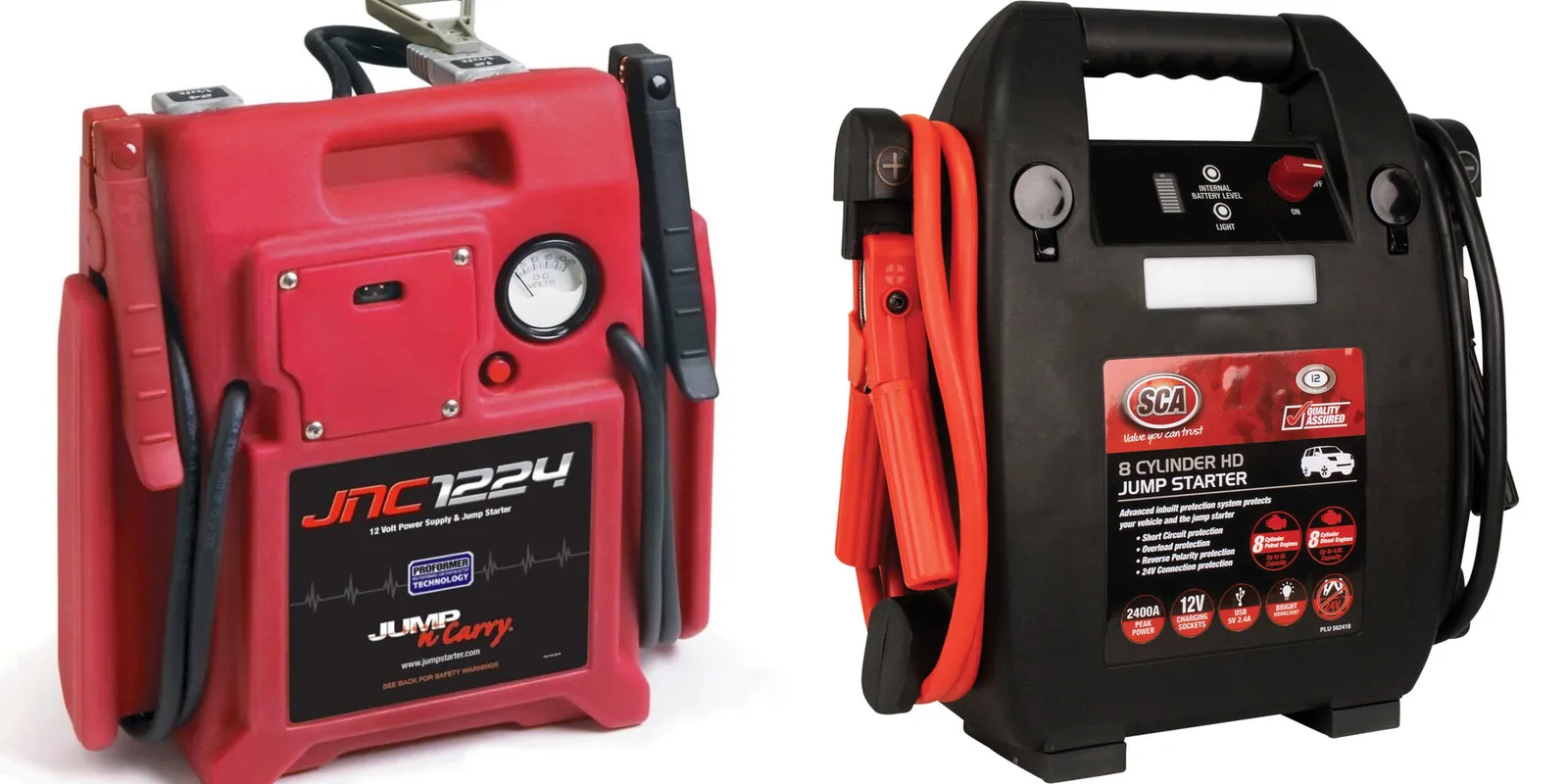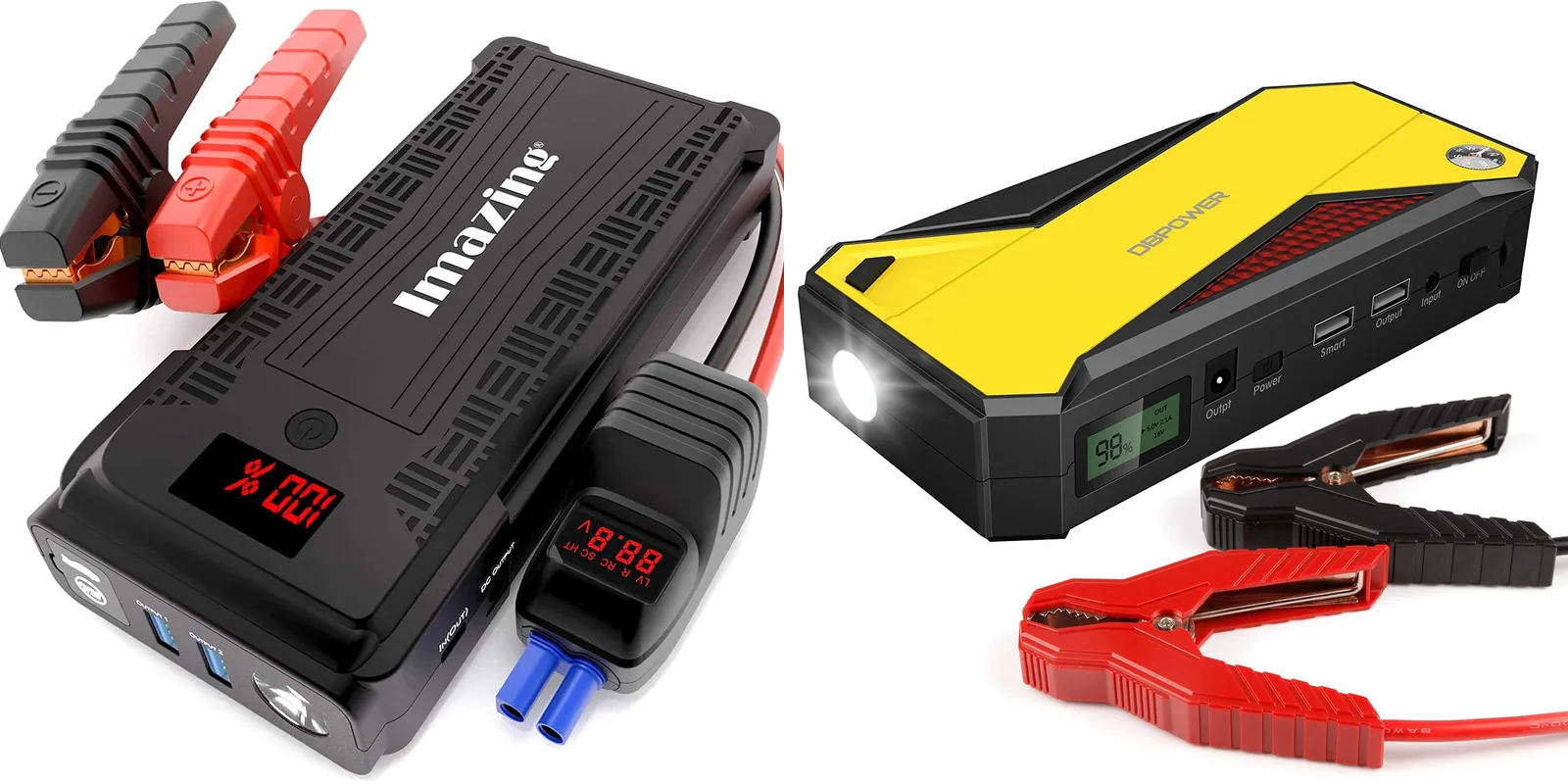When you’re faced with a dead battery, there are a few things you can do to get it started. This guide will outline a step-by-step process for jump starting a car battery. Let’s read on to know more details about how to jump start a dead battery!
Understanding the Basics of Jump Starting a Dead Battery
Jump starting a dead battery is an essential skill to have if you own a car or motorcycle. It can be a life-saving technique if you’re stranded in the middle of nowhere. Here’s a guide to jump starting a dead battery.
- First, make sure you have the necessary tools. You’ll need a battery charger, a cable, and a wrench.
- Next, connect the battery charger to the battery. The red wire goes to the positive terminal, and the black wire goes to the negative terminal.
- Next, connect the cable to the wrench. The end of the cable with the red wire should go into the wrench, and the end of the cable with the black wire should go into the battery.
- Now, turn the wrench to the appropriate voltage. For a car battery, turn it to 12 volts. For a motorcycle battery, turn it to 14 volts.
- Finally, start the battery charger. The red light will turn on, and the battery will start to charge.
How a battery works
A battery is a medium-sized electronic device used to store energy and provide power to electronic devices. A battery usually contains cells that are covered in an outer cover and an inner core. The cells function as a storage container for the energy that is stored in them, and they are connected to the charger or other electronics device by a cable.
Overall, how a battery tester works is by measuring the voltage of the battery. If the voltage is low, then it needs to be replaced. There are many different types of battery testers, but most of them work in a similar way. By measuring the voltage, they can tell you if your battery needs to be replaced.
What a jump start is and how it works
A jump start is a temporary emergency measure used to start a car that has been stopped in cold weather. The jumper cables are connected to the battery of the car being started, and the other end of the cables is connected to the car battery. The electricity from the battery of the starting car provides enough power to start the engine of the stopped car.
Safety precautions to consider before attempting a jump start
When attempting to jump start a car, there are a few safety precautions that should be taken into account.
- First, make sure that the car is properly parked and the battery is properly disconnected.
- Second, be sure to use caution when starting the car. Do not apply too much force to the starter.
- Finally, if the car does not start after trying the jump start, it may be necessary to call a tow truck or a mechanic.
Preparing for the Jump Start
Locating the battery and understanding its terminal points
Jump starting a car can be a harrowing experience, but it’s an important skill to have if you need to get a vehicle running in a pinch. Before jumping a car, you need to locate the battery. The battery may be located in various places on the car, so it’s important to understand the terminal points. The positive terminal is typically located on the side of the battery near the engine. The negative terminal is typically located near the car’s rear suspension.
Ensuring that the donor vehicle is compatible with the dead battery
Do you have a donor vehicle that you are considering using to jump start your car? It is important to make sure that the donor vehicle is compatible with the dead battery. Here are a few tips to help make the jump start as successful as possible:
- Test the battery before the jump start. Test the battery to make sure it is properly charged and in good condition. If the battery is not in good condition, the jump start could be unsuccessful.
- Verify the type of battery. Make sure the battery you are using is the correct type for your car. Some cars require a certain type of battery, and using a different type could result in a failed jump start.
- Verify the connections. Make sure all of the connections between the donor vehicle and the car battery are secure. If there are any loose connections, the jump start could be unsuccessful.
- Clear any obstructions. If there are any objects in the way of the battery and the donor vehicle, they may block the connection and prevent the jump start from being successful. Remove any obstructions before starting the jump start.
Parking the vehicles in the correct position
One of the first things that you will want to do when preparing for a jump start is to park the vehicles in the correct position. This will help to ensure that the jump start is as successful as possible.
When parking the vehicles, it is important to position them so that the batteries are as close to the vehicle as possible. This will help to ensure that the jump start is as efficient as possible. Additionally, it is important to make sure that the vehicles are as close to each other as possible to reduce the amount of time that it will take to start them.
By following these simple tips, you can ensure that your jump start is as successful as possible.
Turning off all electrical accessories
If you’re like most people, you don’t think about turning off all electrical accessories when you have a dead battery. You just power up the car and go! But if your battery is dead and you can’t start the car, it’s important to turn off all electrical accessories before trying to start it. This includes the headlights, windows, wipers, seats, and anything else that could be turned on by electricity.

Jump Starting the Dead Battery
Connecting the jumper cables correctly
It is not unusual for a car battery to die in the middle of nowhere. If you’re out of town and your battery starts losing power, the first thing you should do is connect the jumper cables. Here’s how to do it:
- Make sure your car is off.
- Open the hood and locate the battery.
- Connect one jumper cable to the positive terminal of the battery and the other to the negative terminal.
Starting the engine of the donor vehicle
When you’re ready to start the engine of your donor vehicle, there are a few things you’ll need to do:
- Make sure the donor vehicle is turned off.
- Disconnect the battery cables.
- Remove the key from the donor vehicle’s ignition.
- Start the donor vehicle’s engine with the key removed.
- Reconnect the battery cables.
- Replace the key in the donor vehicle’s ignition.
- Test the donor vehicle’s engine by starting it and then turning it off.
Waiting for a few minutes before attempting to start the dead vehicle
If you have a dead battery, it may be helpful to wait a few minutes before trying to start the car. Waiting will allow your battery to warm up and then become more capable of starting. This is an important step in jump starting your car.
If after trying many times the starter is still sluggish, you may need to heat up the battery. You can do this by removing it and bringing it inside, but be aware you may have a fault indication for a while after it is reinstalled. You will not harm the vehicle by removing the battery. From very cold weather, it may take up to 2 hours to warm the battery sufficiently to increase its available amperage.
Starting the engine of the dead vehicle
Starting the engine of a dead vehicle can be a challenging task, but with a bit of preparation and some common sense, it can be done. Below are some tips to help you get started:
- Unplug the battery charger and any other accessories that may be connected to the battery. This will prevent any potential sparks or damage from occurring while starting the engine.
- Be sure to have an available space in your car for the battery.
- Plug in the power cord of the charger to the cigarette lighter outlet and turn on your car’s ignition.
Disconnecting the cables in the right order
If you’re having trouble jump starting a dead battery, here are some key tips to keep in mind:
- Connect the positive (-) cable first. This will allow the battery to start up and be charged.
- Connect the negative (-) cable last. This will disconnect the battery from the power supply.
- Do this by unscrewing the connector on the cable, then pulling it out of the circuit.
There are a few things you need to keep in mind when disconnecting a car battery.
- Make sure that you have the right tools. You’ll need a wrench to loosen the bolts that hold the battery in place, and a pair of pliers to disconnect the terminals.
- Be sure to disconnect the negative terminal first. This will help prevent any accidental sparks that could cause damage to your car.
- Make sure you clean the terminals before you reconnect the battery. This will help ensure that the connection is good and that your car will start up properly.
After the Jump Start
Running the engine for a while to recharge the battery
Running the engine for a while to recharge the battery can help the battery last longer. Recharging the battery can be done by turning the engine on and off frequently. Turning the engine off completely can also recharge the battery.
Checking the battery’s health and potential replacement
When it comes to our batteries, it’s important to keep an eye on their health. Checking for signs of wear and tear can help you determine when it’s time to replace your battery. Here are four ways to check your battery’s health:
- Check the battery’s voltage. A low voltage could indicate a weak battery.
- Check the battery’s temperature. A hot battery could indicate a problem with the battery’s insulation.
- Check for sulfation. A battery with sulfation will have a thick crust on the plates.
- Check for corrosion. Corrosion can cause a weakened battery.
Safety tips to follow after a successful jump start
After a successful jump start, it is important to follow a few safety tips to ensure your safety and the safety of those around you.
- Always use a safety harness when jumping a car.
- Never jump a car if the battery is not properly disconnected.
- Always check the battery voltage before jumping a car.
- Always wear a helmet when jumping a car.
- Do not jump a car if you are intoxicated or under the influence of any drugs.
